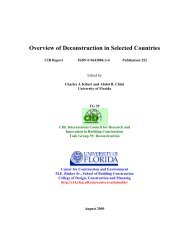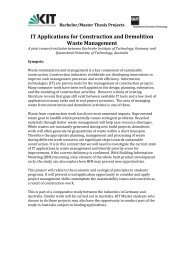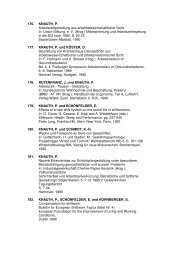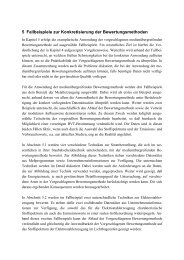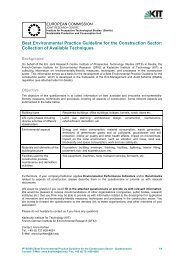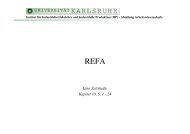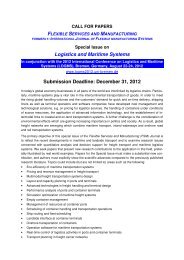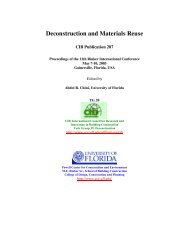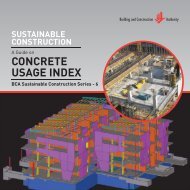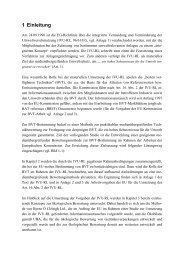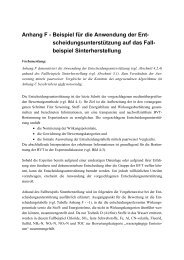Waste reduction final report -4 - Test Input
Waste reduction final report -4 - Test Input
Waste reduction final report -4 - Test Input
Create successful ePaper yourself
Turn your PDF publications into a flip-book with our unique Google optimized e-Paper software.
2. Benchmark data<br />
More than 3/4 of total waste produced in Switzerland originates from construction<br />
engineering. It emerges in all life cycle stages of a construction. The title of this <strong>report</strong> is<br />
“Construction <strong>Waste</strong> in Switzerland”, or, if expanded, “Construction Related <strong>Waste</strong> in<br />
Switzerland”. However, it would be impossible to consider all waste being generated – e.g.<br />
when producing metals or carpets abroad or when considering all materials replaced in<br />
renewal activities.<br />
Data on construction waste are available mainly for the biggest flows of materials in terms of<br />
volume and quantity, e.g. gravel, concrete, asphalt or bricking. Sure enough, compared to<br />
other materials used (mainly in house building), such as ceramics, electricity installation,<br />
floorings or carpets, the above mentioned account for much higher amounts in volume and<br />
weight. However, in many constructions, the “small” materials hold a certain importance and<br />
should not be neglected. As data for those materials are hardly available, this leads<br />
unavoidably to a certain selection bias in this context. Still, the materials above go into each<br />
building and don’t have a long life time. In the end, sustainable handling of construction<br />
(waste) materials has to incorporate all flows in construction!<br />
Please note that there are no thorough statistics on construction waste in Switzerland. Data<br />
listed here mainly originates from modelling done by engineering consultants for the FOEN,<br />
once between 1998 and 2001 and newly modelled in 2008. These figures therefore have to be<br />
taken as indicative. Out of the modelling in 2001, a publication resulted [FOEN 2001],<br />
whereas the latest data has not been published [FOEN 2008c]. Whenever possible, data from<br />
2008 has been used.<br />
<strong>Waste</strong> types<br />
This section deals with the waste which is emerging in construction engineering and the<br />
treatments that are possible in Switzerland. As in the previous chapters, the materials mainly<br />
dealt with are mineral materials. Firstly, these are the materials most used in construction in<br />
view of quantity and volume. Secondly, Swiss modelling in recent years focussed on these<br />
materials and therefore most data are available in this group.<br />
The first modelling of construction waste in 2001 estimated a annual amount of 11 MT of<br />
construction waste in Switzerland. Because of higher demolition activities, they modelled this<br />
figure to increase by 40% in house building and by 3% in civil engineering (up to 14.5 Mio. t<br />
per year) until 2010 [FOEN 2001]. Latest estimates give a value of about 15 MT of waste per<br />
year, which is about three times more than municipal waste produced per year [FOEN<br />
2008c]. In these figures, the excavation material is not included. The amount of the latter is<br />
estimated to be 60-80 MT [FSO 2005]. The rise in construction waste since 1997 is more or<br />
less due to the house building sector. In civil engineering, the infrastructure is mainly built so<br />
that activities in the future will mostly consist in waste-poor maintenance work.<br />
Figure 7 shows results of latest waste modelling in Switzerland by the FOEN. Note: There is<br />
0.13 MT of asphalt waste from house building, which is difficult to identify in the figure.<br />
93



